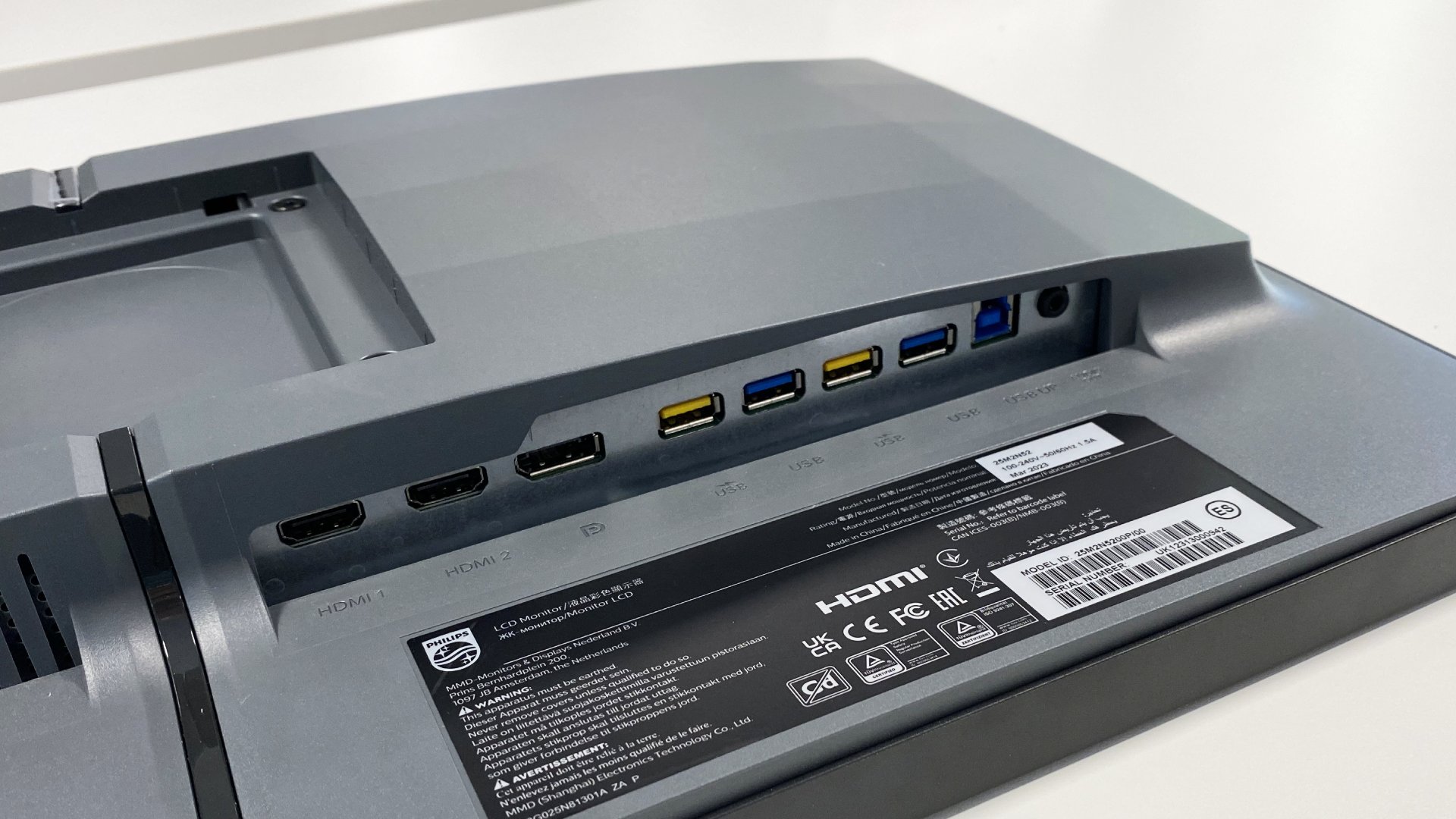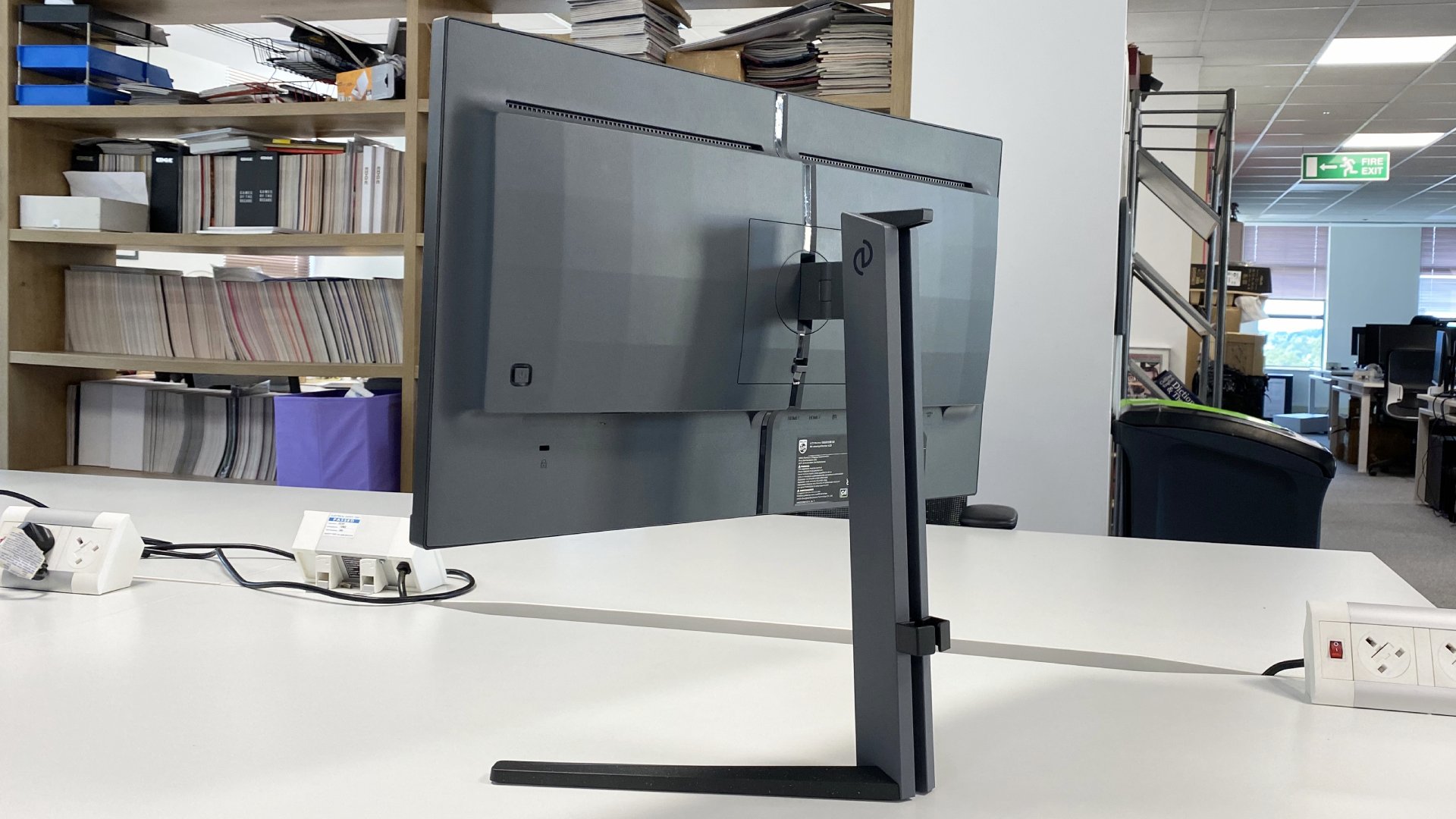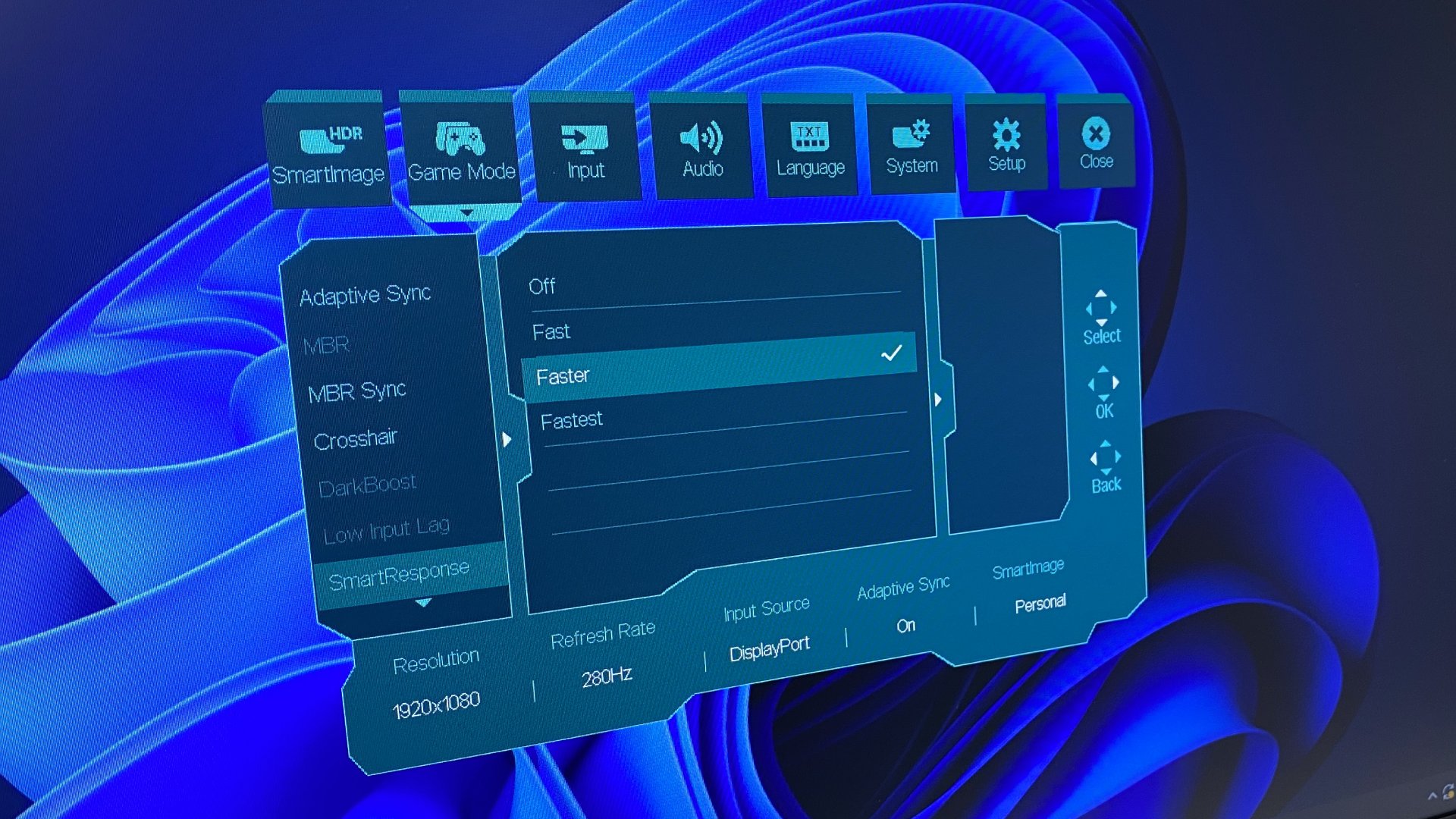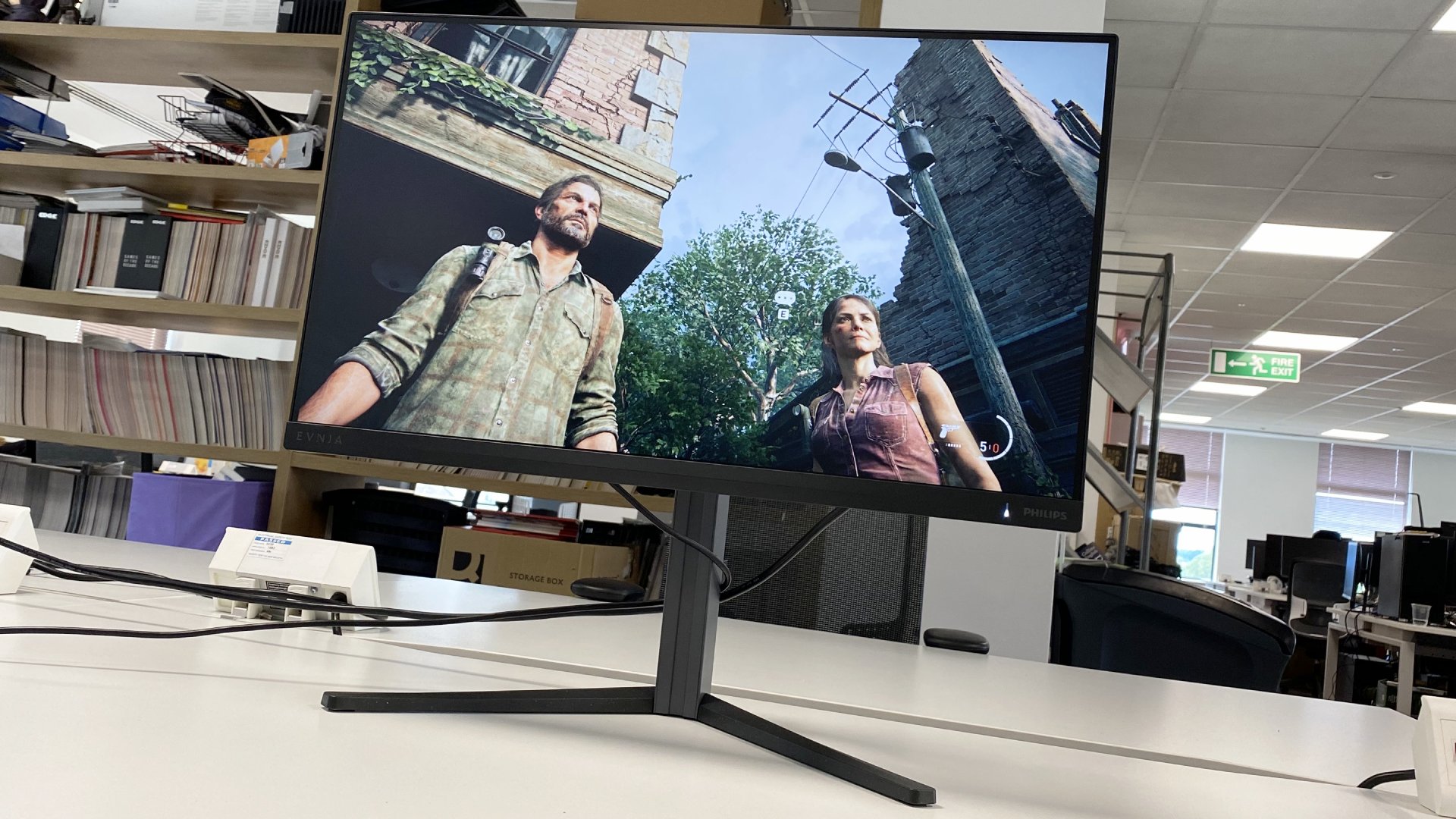GamesRadar+ Verdict
You can just about get a 1440p 144Hz monitor for similar money and that would be our preference. But if the remit is high-performance 1080p PC gaming and a sensible price point, the Philips Evnia 34M2C8600 absolutely nails it.
Pros
- +
Seriously speedy IPS panel
- +
Decent all-round image quality
- +
Good feature set
Cons
- -
Limited HDR support
- -
No USB-C connectivity
- -
A 1440p panel would arguably be the better compromise
Why you can trust GamesRadar+
For most PC gamers, 1440p and around 144Hz is something of a sweet spot. But what if you want that little bit more speed, that little bit less latency? Then a 1080p panel like the new Philips Evnia 25M2N5200P enters the equation.
Capable of 280Hz, it's a significant step over the 144Hz threshold we use to qualify the best high refresh rate monitors. What's more, the 1080p resolution makes it easier to hit those higher frame rates. Banging out 280Hz at 1440p in the latest and most demanding games is a tall order, even with a megabucks graphics card. In other words, this 25-inch 1080p monitor is a good fit with a mid-range GPU.
What it isn't, on the other hand, is an obvious choice for console gaming. Sure, 1080p and high refresh makes sense with Sony and Microsoft's latest gaming machines. But only up to 120Hz. What doesn't make sense is to pay for the extra refresh that this Philips serves up in a console gaming context. You're forking out £269.99 for performance you simply can't use.
Design and Features
Philips has been rolling out new gaming monitors under the Evnia brand thick and fast of late. But this is by far the most affordable member of what has previously been a pretty pricey range of panels, including the 34-inch OLED Philips Evnia 34M2C8600.
This 25-inch monitor is on a much smaller scale, with a more compact price tag to match. And while it carries over much the same design ethic as those pricier Evnias, including the geometric flourishes to the rear of the chassis, the plastics and general build quality aren't quite of the same stature.

If that's something of a given thanks to the much lower price point, you still get a proper stand with not only height, rotation, and swivel adjustment, but also rotation into portrait mode in both directions. A tangential feature for gaming? For sure, but it proves that Philips hasn't cheaped out on this monitor.
Ports-wise, you get one DisplayPort 1.4 interface and a pair of HDMI 2.0 sockets. There's also a USB-A hub, but no USB-C connectivity. So, that means no single-cable action with a gaming laptop.
Still, there is basic HDR support with VESA DisplayHDR 400 certification, an IPS panel running at 280Hz, and AMD FreeSync adaptive refresh tech. So, all the important gamer-centric feature boxes are ticked.
Performance

Philips rates this 25-inch IPS panel at 1 ms for grey-to-grey pixel response. And it absolutely looks and feels like a 1ms-class IPS monitor. This is a very quick panel, which is par for the course from Philips. When we tested the Philips Momentum 5000 27M1F5800 we found much the same experience, boosting that monitor into the realms of best 4K monitors for gaming.
You can choose between three levels of pixel-accelerating overdrive in the Evnia's OSD menu. The fastest setting has a touch of overshoot and is probably best avoided. But the middle setting is clean, crisp, and seriously quick. Factor in the 280Hz refresh and you'd have to be bordering on pro-level in terms of esports aptitude to find this monitor lacking when it comes to pixel speed or latency. It's super responsive.
It's not too shabby when it comes to image quality, too. OK, there are way too many image pre-set options in the OSD, most of which look utterly rubbish, such as the Darkboost mode which completely messes up the color balance, and, likewise, all of the non-standard HDR modes, which look awful.

However, stick to the default SDR or HDR modes and you won't be disappointed. In SDR terms, this is a pleasingly punchy panel with good color calibration and plenty of visual zing. Granted, 1080p on a 25-inch panel doesn't make for the last word in pixel density. If you want super-sharp image quality, going for 1440p at minimum is recommended.
But that's the trade-off you have to weigh up. Yes, 1080p means less image detail. But it also means faster frame rates if you have one of the best graphics cards. As for HDR performance, well, this is an HDR 400 screen and that means no local dimming. It's the most basic flavor of HDR support, but the real-world HDR performance is actually slightly better than the norm for this class of monitor.
HDR-capable games do actually look more vibrant and immersive in HDR mode if only a little. The catch is that SDR content looks rather subdued when running the panel in HDR mode. So, you can't just leave the Evnia in HDR mode all the time. You really have to toggle back and forth between SDR and HDR mode to get the best experience, which is a pain albeit a pretty common one across most monitors with HDR support.
Should you buy the Philips Evnia 25M2N5200P?

While we're not entirely sold on the basic proposition of choosing a higher refresh 1080p panel over a 144Hz 1440p display, the question of whether you should buy a Philips monitor is never a tough one to answer.
The Philips Evnia 25M2N5200P offers a solid feature set and very good core image quality. The pixel response is particularly zippy and that 280Hz refresh is a nice fit for 1080p PC gaming if you're planning on running a mid-range GPU. The HDR performance is also a cut above the HDR 400 norm, even if this still isn't a true HDR panel.
The Philips Evnia 25M2N5200P makes less sense as a gaming monitor for PS5, given the lack of support for refresh rates above 120Hz on even the very latest Microsoft and Sony consoles. But if you're in the market for a quick but sensibly priced 1080p panel for high-performance PC gaming, this Envia should be very near the top of your list.
How we tested the Philips Evnia 25M2N5200P
The Philips Evnia 25M2N5200P is pretty much a PC gaming monitor through and through, it's not a cost-effective choice for console gaming. So, our testing focussed on running a range of PC games, including shooters like Apex Legends, GPU-heavy eye candy fests with HDR support including Cyberpunk 2077, and all the hottest and newest titles such as Hogwarts Legacy and The Last of Us: Part I.
We're looking at how this panel performs from every angle, including pixel response, latency, brightness, contrast, color accuracy, and HDR support. We also assess the full feature set including connectivity, build quality, and ergonomics, comparing it closely to our experience with other Philips monitors like the Philips Momentum 329M1RV, as well as other high refresh rate monitors.
To hear more about the ways we test the latest gaming hardware here at GamesRadar, take a look at our hardware policy.
Not done in your quest for an epic new gaming monitor? Expand your search to the best monitor for Xbox Series X, the best ultrawide monitor, and the best curved monitor.
A serious dissertation on the finer points of input lag and overshoot followed by a forensic examination of AI-accelerated temporal upscaling. Such is a routine day in the working life of long-time tech wordsmith, Jeremy Laird. Along with GamesRadar, Jeremy’s 15-year back catalogue includes a host of tech and gaming outlets, including TechRadar and PC Gamer, not to mention contributions to mainstream media from the Independent to the Evening Standard. Complimenting Jeremy’s debilitating addiction to all kinds of digital hardware, he is also afflicted by an obsession with and a significant occupational sideline in cars and automotive technology.




